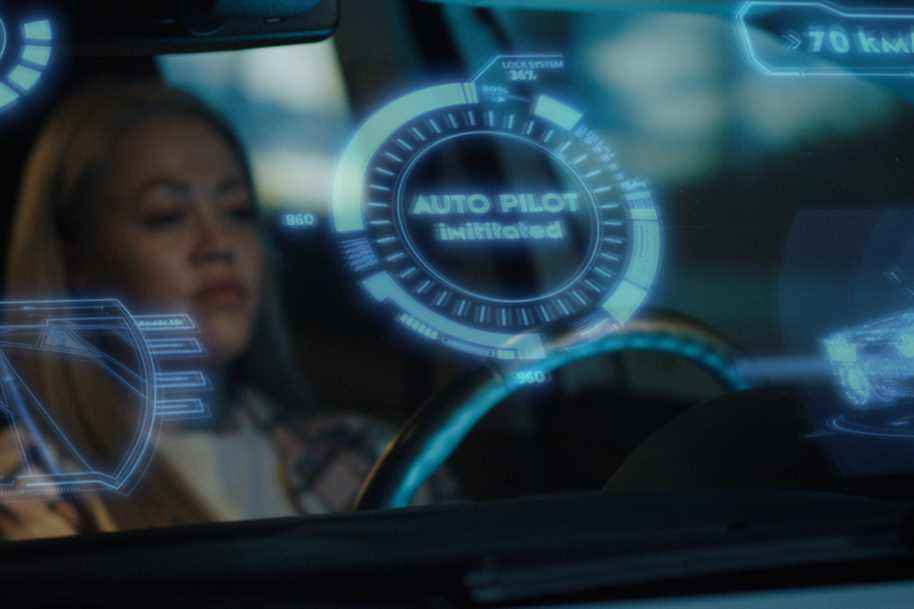With the advent of augmented reality, we can expect advances in many areas, starting with a small revolution in car windshields.
The time when, behind the wheel of his car, each driver will have the leisure to see images projected directly into his field of vision are not far away.

PHOTO FRANÇOIS ROY, PRESS ARCHIVES
In 2022, the Auto section welcomes Bertrand Godin, a well-known figure in motorsport for more than 30 years, to its screens. Speaker, instructor, columnist, spokesperson, ambassador and man committed to his community, Bertrand Godin will now introduce you to the latest automotive technologies, and will guide you through his driving tips.
We will find real-time road assistance and we can see at any time the speed at which we are driving. Depending on the models developed, we will have information before our eyes to find places of interest, to take advantage of geolocation, to calculate the braking distance, to reduce blind spots or even, why not, images for simple entertainment. passengers.
How will all of this materialize? Not that complicated.
At the wheel of his car, the driver will see these connected images appear in the real world, 3D holographic displays that will be displayed on part of his windshield, if not on the side windows of his car.
In some cases, passengers will even be able to interact with the information displayed there.
Science fiction? Technology of the future? Not at all. This technology is known today under the term “head-up display in augmented reality”, the latest toy for car manufacturers, who intend to take advantage of it to seduce their customers. And we must recognize that the potential is, indeed, rather attractive.
Builders at work
To date, even if the pandemic has slowed down some enthusiasm, several car manufacturers are actively working on this type of technology, each with its variants, ambitions and innovations.
Currently, for example, the Swiss company WayRay is working in collaboration with car manufacturers like Porsche and Hyundai to present this type of windshield in the near future. The product could even end up in the next generations of their vehicles.
With this new windshield equipped with a screen with holographic augmented reality, they promise the driver clear virtual images and an unequaled depth of color.
Volvo, for its part, is working in the same direction and also intends to transform the experience of car rides for its customers. This Swedish company has invested $ 2 million in a start-up Israeli specialist in optical and imaging technologies.
At Volvo, we are talking about a transparent film which would be attached to the windshield and which would be used as a screen. Their technology relies on the projection of images capable of widening the driver’s field of vision, offering a feeling of distance from the elements displayed, while ensuring a good perception of the road.
This year, at the famous Consumer Electronics Show (CES) in Las Vegas, Panasonic has meanwhile gone ahead by presenting a windshield that mixes augmented reality and head-up display, all displayed in 4K, like its televisions.
Finally, at Jaguar Land Rover, we are increasing the cost by developing a prototype that brings us closer to video games, since it includes certain elements that will be familiar to players. With this technology, we rely on a trajectory calculation module that can guide the driver before making a turn.
A green marking is displayed? Everything is fine. The driver has perfect speed to make his turn. A red marking appears? It is too fast ! You will have to slow down to stay safe.
But still, we are now working on a concept that would allow cameras to be placed under the car in order to visualize the ground, just to see the obstacles present and to perform the maneuver that is required.
In this context, it is easy to imagine that car manufacturers will compete in ingenuity to make this new technology a new must.
Safety objective
However, in front of this information, a question quickly comes to the head of any driver, namely: with these windshields of the future, what will be the concentration behind the wheel?
On this side, we are reassuring, since the technology will be used precisely so that the driver can continue to watch the road constantly, while having the possibility of scrolling through the information in a quick gesture that will in no way affect his driving.
In fact, this type of display is seen by many as a way of ensuring the safety of drivers who, as we know, are too often distracted by monitoring the exterior screens that are found in their cars. The same goes for the touch screens of the dashboards which, suddenly, will no longer have their raison d’être.
Displayed directly in the driver’s field of vision, information will now reach him without having to look away. As such, the driver’s consciousness would only be improved.
It is to be expected that automakers will compete in skill to be persuasive, because the rewards are worth the candle. Some predict that by 2023, this technology could reach a value of more than $ 1 billion.
It must be said that augmented reality has proven itself. Military aviation has been using it for years. Benefiting from this technology behind the wheel is, in fact, only the natural evolution of things. An evolution which brings its share of new data, enough to pave the way for the development of autonomous driving.

